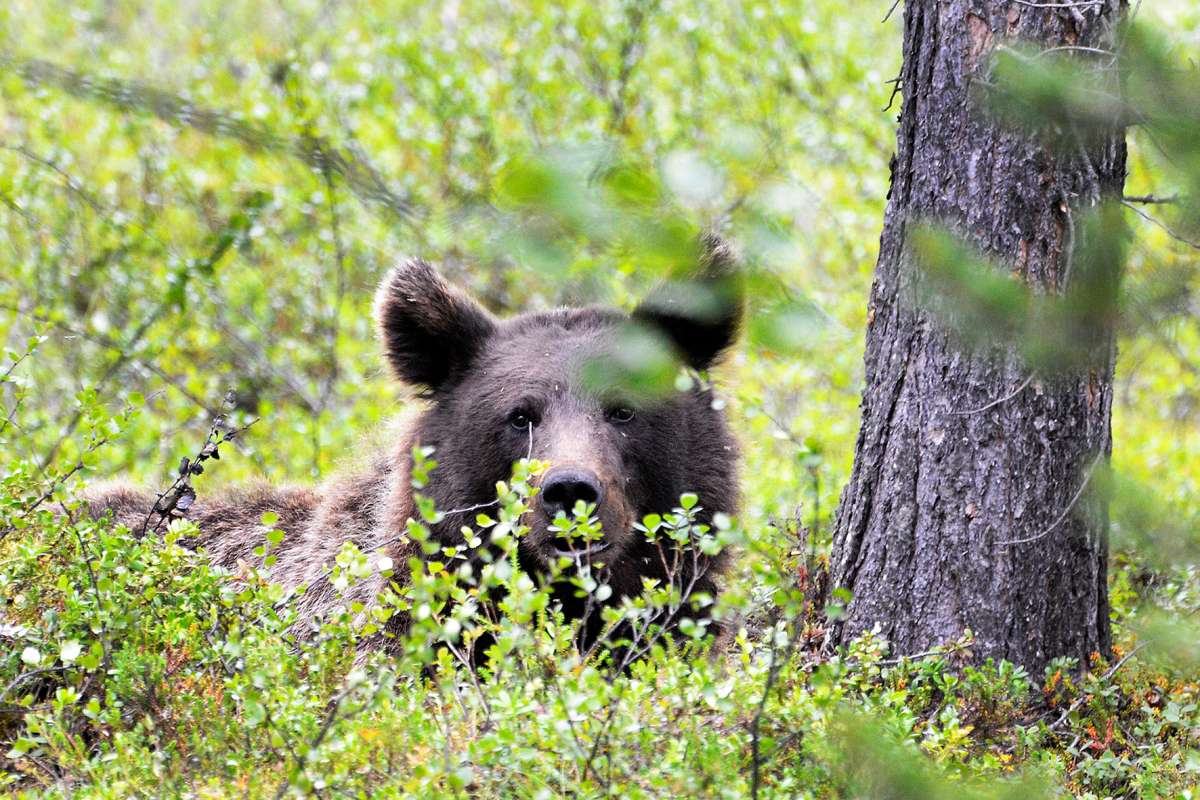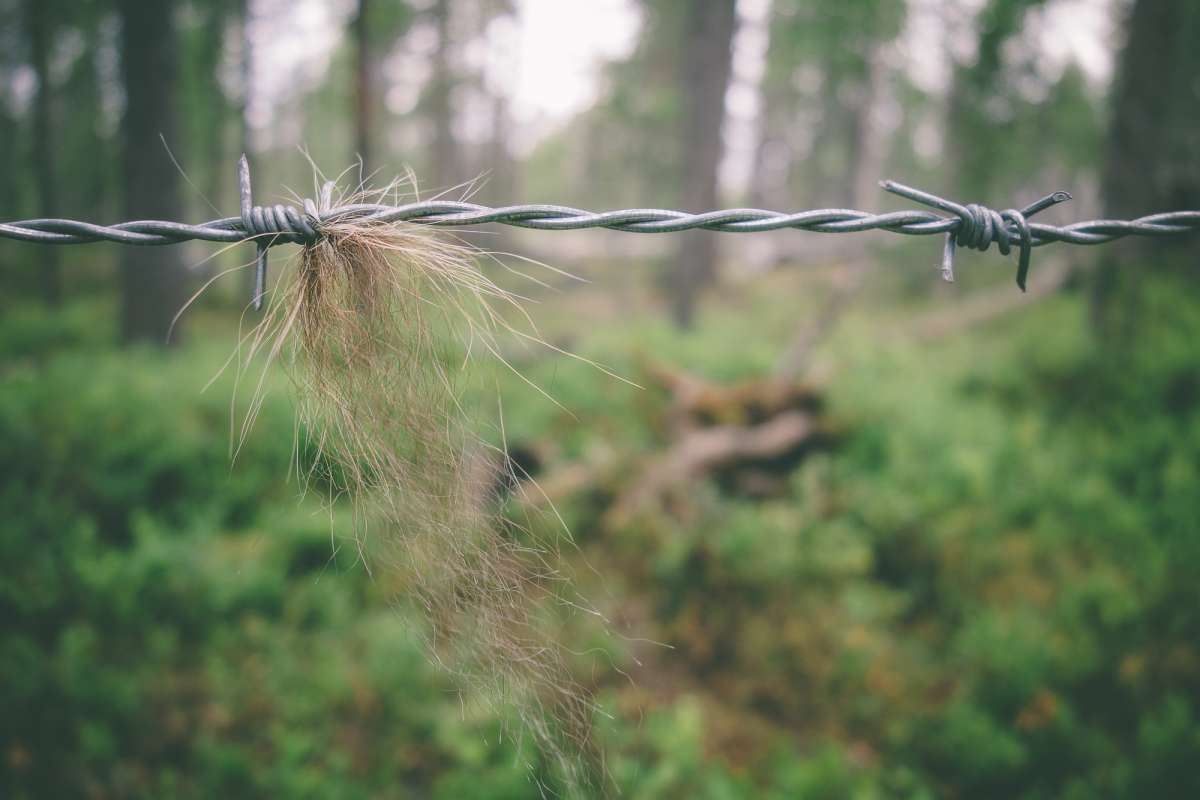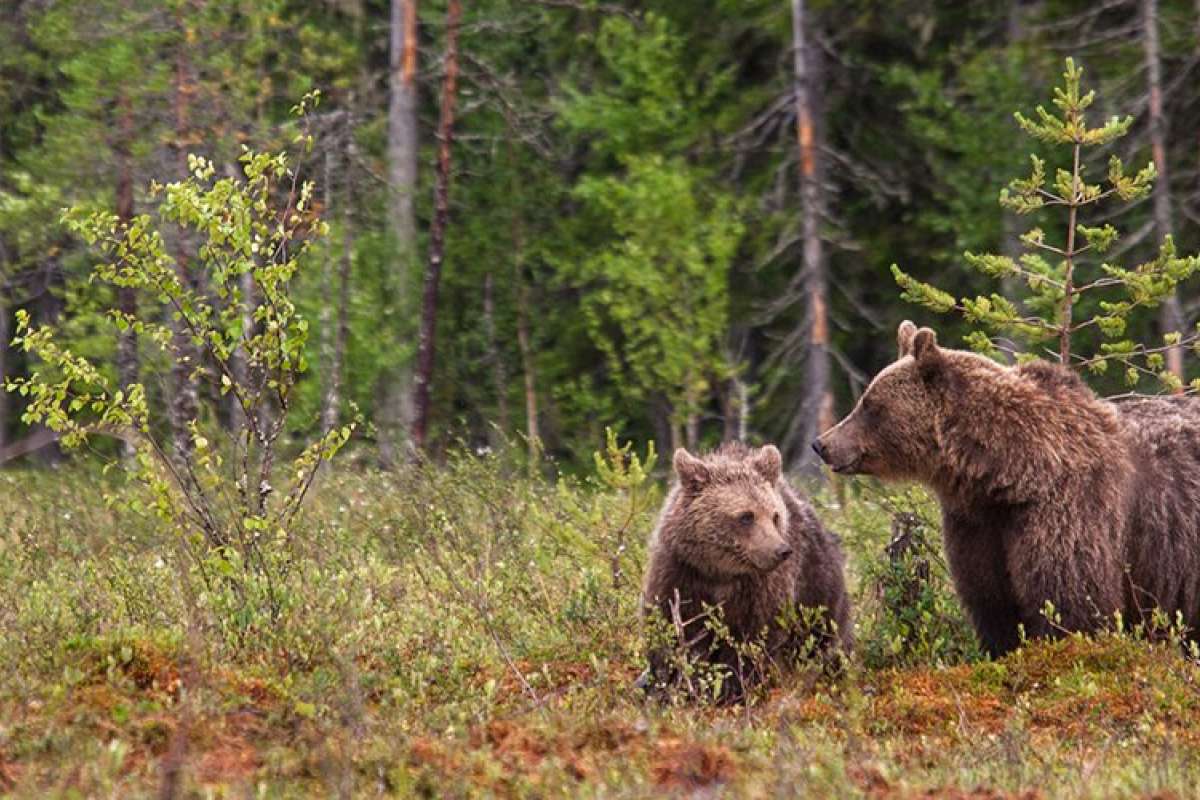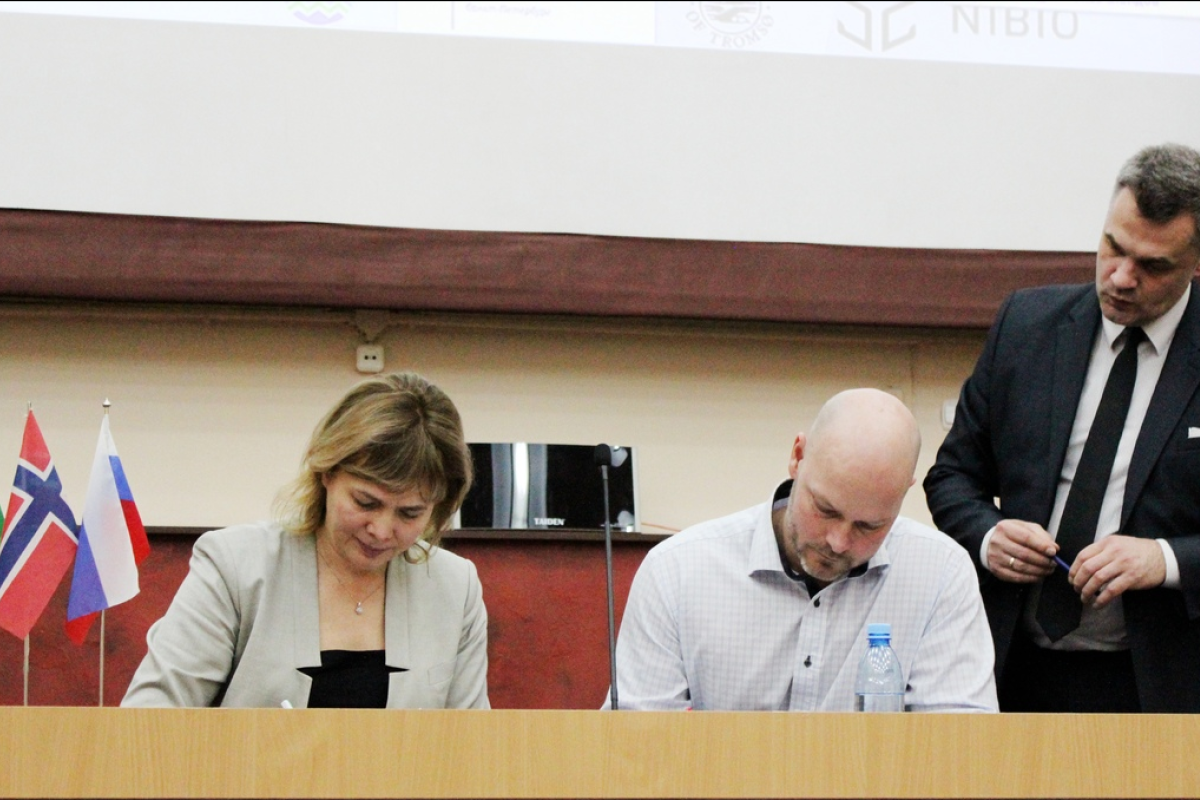Genetic Monitoring of Brown Bear
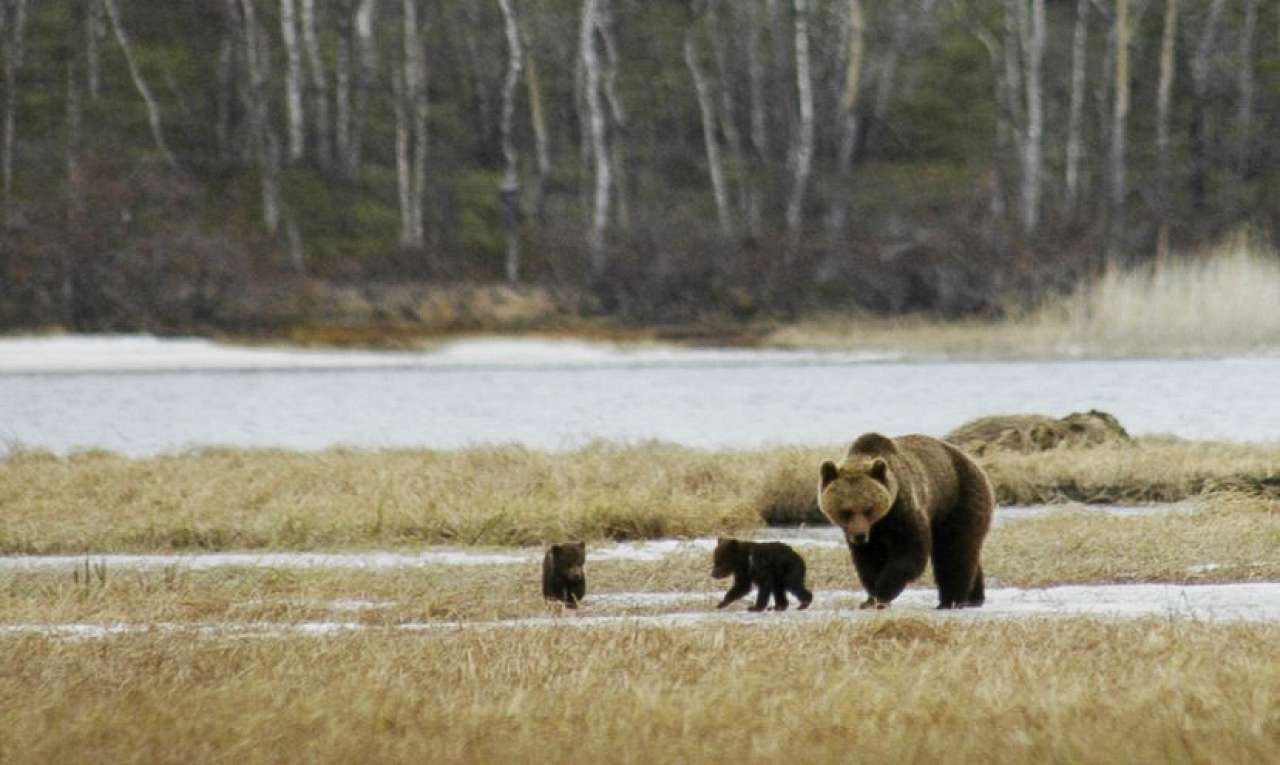
Brown bear female with two cubs in the Pasvik River Valley. Photo: Steinar Wikan (NIBIO Svanhovd).
The research group and genetic lab at NIBIO Svanhovd has been instrumental in advancing monitoring methods and research on brown bears in Norway and Fennoscandia. Today, the Department of Ecosystems in the Barents Region at Svanhovd houses a collection that contains scat and hair samples with sampling efforts ongoing.
This formerly widespread and common species in Fennoscandia was almost exterminated in the early 20th century due to excessive hunting. Nowadays, ~150 individuals are found in Norway and close annual monitoring of the population is conducted to assess the recovery status. Brown bears are an elusive species and it is difficult to obtain demographic data with conventional means.
With the advancements of molecular tools, a scat collection program was initiated in 2006 and demographic data like individual identification and sex are determined by genetic methods. This approach is also advantageous because no handling of animals is involved (i.e., non-invasive) and hence, bears are not disturbed.
In addition, regular hair snare projects are undertaken to non-invasively collect hairs from brown bears in Pasvik.
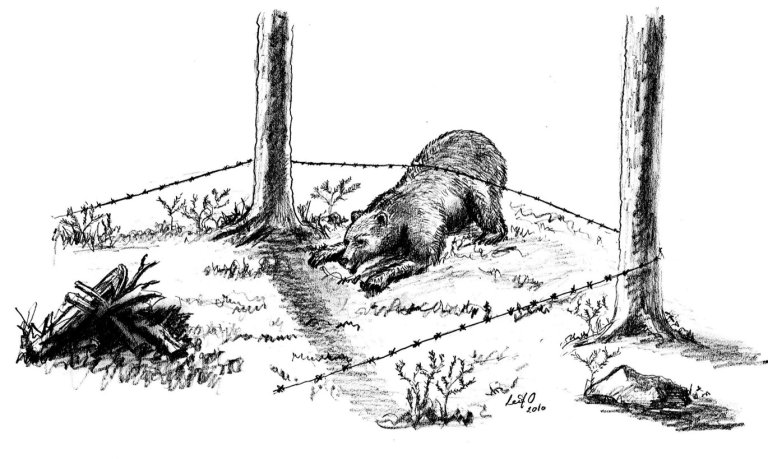
The research group and genetic lab at NIBIO Svanhovd has been instrumental in advancing monitoring methods and research on brown bears in Norway and Fennoscandia. Today, the Department of Ecosystems in the Barents Region at Svanhovd houses a collection that contains scat and hair samples with sampling efforts ongoing.
This detailed sampling scheme combined with the application of molecular tools (Andreassen et al. 2012, Bidon et al. 2013) has also enabled research in the recovering Fennoscandian brown bear populations (Hagen et al. 2015, Schregel et al. 2012, 2015, 2017) describing spatial connectivity and differentiation patterns. Brown bears in Fennoscandia belong to two different populations, with the population in northern Norway being more closely related and connected to the Russian bear populations (Kopatz et al. 2014). Finally, the recent recolonization event allows for the testing of theoretical biological models that help to understand dynamics in recovering natural populations (Hagen et al. 2015).
Contacts

Contacts

Publications
Abstract
No abstract has been registered
Abstract
No abstract has been registered
Authors
Julia Schregel Hans Geir Eiken Finn Audun Grøndahl Frank Hailer Jouni Aspi Ilpo Kojola Konstantin Tirronen Piotr Danilov Alexander Rykov Eugene Poroshin Axel Janke Jon Swenson Snorre HagenAbstract
No abstract has been registered
Authors
Alexander Kopatz Hans Geir Eiken Jouni Aspi Ilpo Kojola Camilla Tobiassen Konstantin F. Tirronen Pjotr I. Danilov Snorre HagenAbstract
No abstract has been registered
Authors
Tobias Bidon Axel Janke Steven R. Fain Hans Geir Eiken Snorre Hagen Urmas Saarma Björn M. Hallström Nicolas Lecomte Frank HailerAbstract
No abstract has been registered
Authors
Tobias Bidon Christiane Frosch Hans Geir Eiken Verena E. Kutschera Snorre Hagen Siv Aarnes Steven R. Fain Axel Janke Frank HailerAbstract
No abstract has been registered
Authors
Rune Andreassen Julia Schregel Alexander Kopatz Camilla Tobiassen Per Knappskog Snorre Hagen Oddmund Kleven Michael Schneider Ilpo Kojola Jouni Aspi Alexander M. Rykov Konstantin F. Tirronen Pjotr I. Danilov Hans Geir EikenAbstract
No abstract has been registered
Authors
Julia Schregel Alexander Kopatz Snorre Hagen Henrik Brøseth Martin Smith Steinar Wikan Ingvild Wartiainen Paul Eric Aspholm Jouni Aspi Jon Swenson O. Makarova Natalia Polikarpova Michael Schneider Per Knappskog Minna Ruokonen Ilpo Kojola Konstantin F. Tirronen Pjotr I. Danilov Hans Geir EikenAbstract
Noninvasively collected genetic data can be used to analyse large-scale connectivity patterns among populations of large predators without disturbing them, which may contribute to unravel the species’ roles in natural ecosystems and their requirements for long-term survival. The demographic history of brown bears (Ursus arctos) in Northern Europe indicates several extinction and recolonization events, but little is known about present gene flow between populations of the east and west. We used 12 validated microsatellite markers to analyse 1580 hair and faecal samples collected during six consecutive years (2005–2010) in the Pasvik Valley at 70_N on the border of Norway, Finland and Russia. Our results showed an overall high correlation between the annual estimates of population size (Nc), density (D), effective size (Ne) and Ne ⁄Nc ratio. Furthermore, we observed a genetic heterogeneity of _0.8 and high Ne ⁄Nc ratios of _0.6, which suggests gene flow from the east. Thus, we expanded the population genetic study to include Karelia (Russia, Finland), Va¨sterbotten (Sweden) and Troms (Norway) (477 individuals in total) and detected four distinct genetic clusters with low migration rates among the regions. More specifically, we found that differentiation was relatively low from the Pasvik Valley towards the south and east, whereas, in contrast, moderately high pairwise FST values (0.91–0.12) were detected between the east and the west. Our results indicate ongoing limits to gene flow towards the west, and the existence of barriers to migration between eastern and western brown bear populations in Northern Europe.

